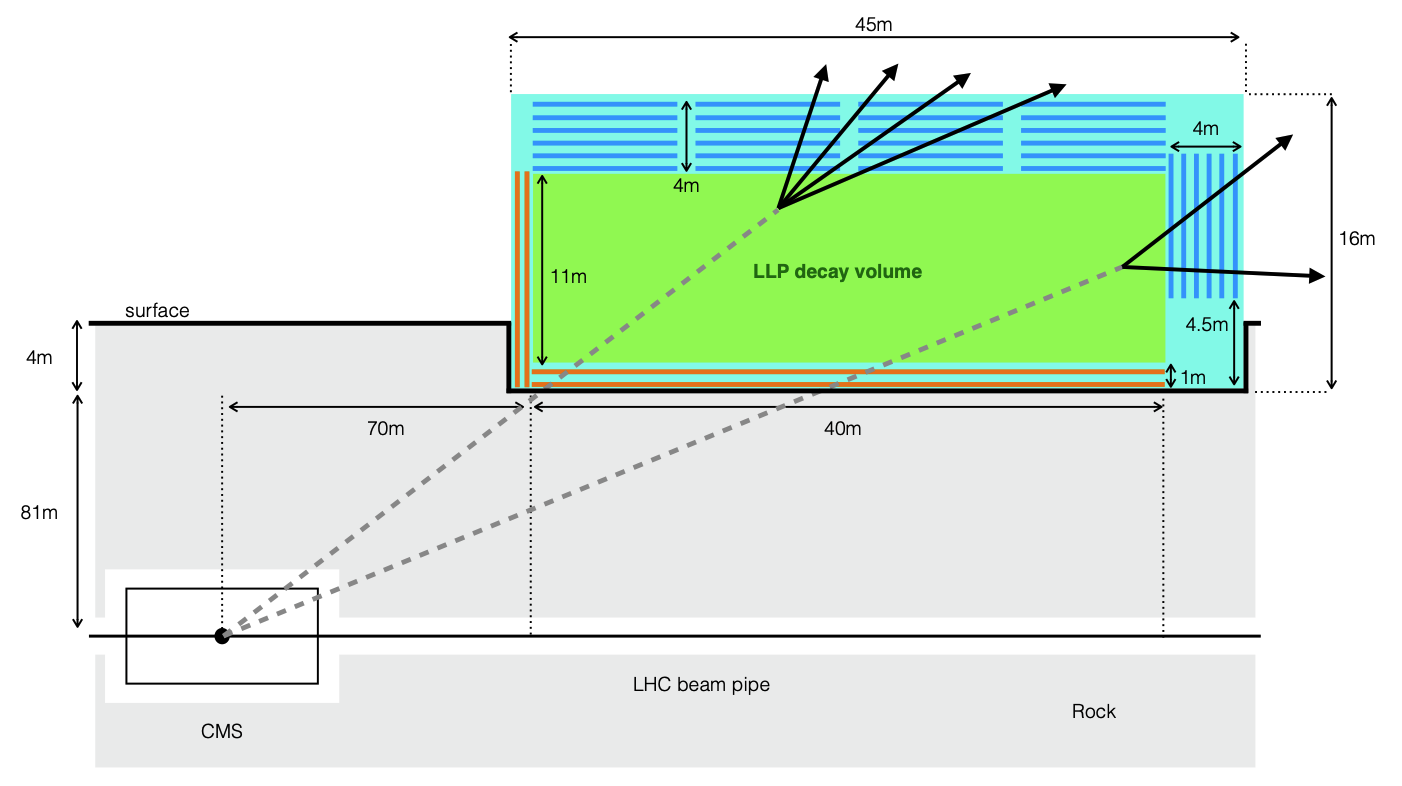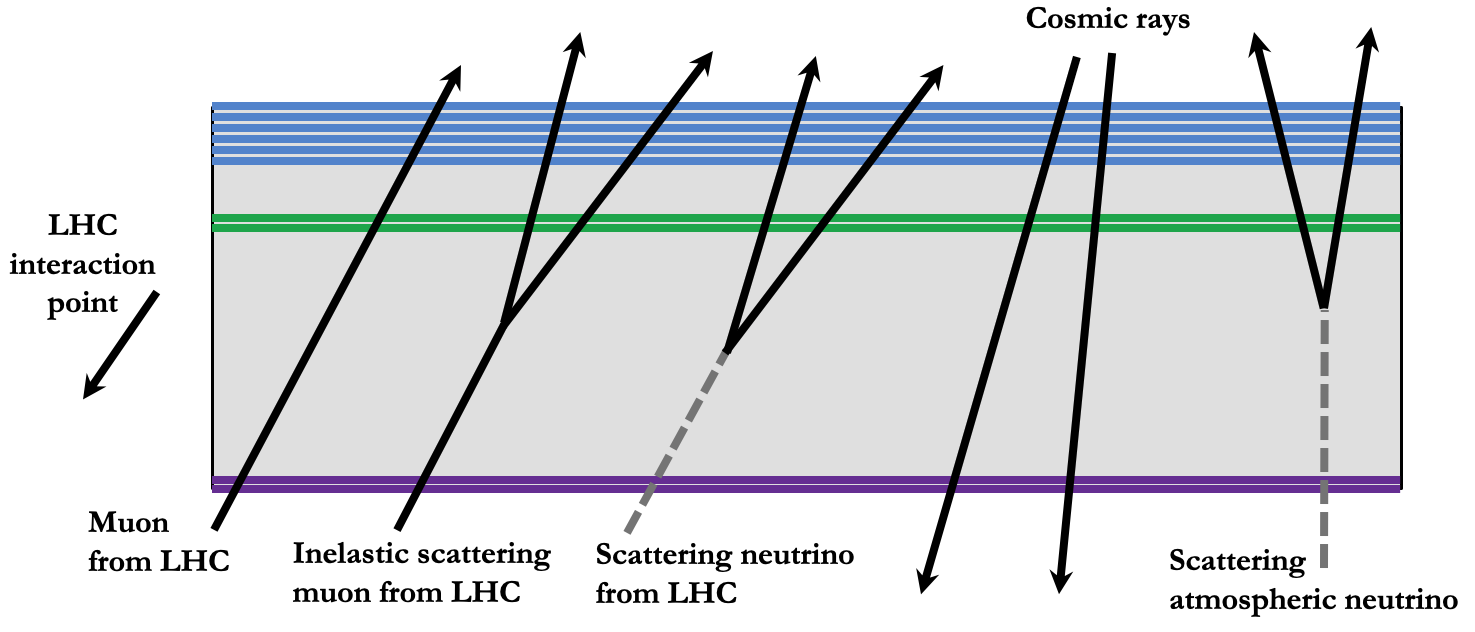The MATHUSLA collaboration is working on a revised geometry with reduced size and cost compared to the 100m benchmark below. This page will be updated accordingly when that is available.
MATHUSLA (Massive Timing Hodoscope for Ultra Stable neutraL pArticles) is a proposed detector at CERN with the aim of going online with the HL-LHC upgrade to the Large Hadron Collider in ~2029.
Many extensions of the Standard Model (SM) include particles that are neutral, weakly coupled, and long-lived that can decay to final states containing several SM particles. Missing energy (MET) searches at ATLAS and CMS are undoubtedly crucial in probing new physics giving rise to more than several hundred GeV of MET, but the sensitivity drastically drops for softer signals. Searches for long-lived particles (LLP) in the LHC detectors have set significant cτ exclusion limits from a few centimetres to tens of meters, but the detection reach of the LHC detectors is limited by trigger and background difficulties. Therefore, even if an LLP was already produced at the LHC, it might have been inevitably missed.
No existing or proposed search strategy will be able to observe the decay of neutral LLPs with masses above ~GeV and lifetimes up to the limit set by Big Bang Nucleosynthesis (cτ ~10^7-10^8 m).
MATHUSLA is a large-scale (40 m x 40 m x 11 m), relatively simple detector for the HL-LHC that can detect the decay of neutral LLPs produced in proton-proton (pp) collisions at the LHC. Its location on the surface shields it from backgrounds that constrain the ability of the main detectors, like ATLAS and CMS, to look for many of these kinds of particles, and provides MATHUSLA with a background free environment and no trigger limitations. Moreover, the large size of MATHUSLA would also allow it to act as a cosmic ray (CR) telescope.

MATHUSLA needs a robust tracking and an excellent background rejection. The proposed detector concept, is shown the figure above. LLPs (gray dashed) can decay into SM charged states (black arrows) in the LLP decay volume of 11 m (green) and be reconstructed as displaced vertices by the tracking modules (blue). Both wall and ceiling tracking modules consist of six (9 m)^2 tracking layers separated by 80cm for a total thickness of 4 m, arranged in a 4 × 4 grid on the ceiling and a row of 4 on the rear wall, with neighboring tracking modules separated by ∼1 m. Rejection of LHC muon and cosmic ray backgrounds is aided by the double-layer veto detector (orange), comprising the front wall veto detector and floor veto detector, which is close to hermetic for LHC muons and downward traveling cosmics. The decay of an LLP is identified by two or more upward going tracks that reconstruct a common 4-dimensional (space and time) vertex within the decay volume. Extruded scintillators + SiPMs are currently considered for their good time/space resolution.
MATHUSLA Backgrounds
The order of 100 meters of rock removes most backgrounds associated with pp collisions, but a large background of cosmic muons as well as backgrounds from high energy muons and neutrinos coming from the IP and interacting in the decay volume must be rejected. CR can be eliminated based on the direction of the incident particle determined using timing information. LHC muons are discarded by the floor veto layer. Other backgrounds are subdominant, and they can be rejected by the floor veto, and by studying the event topology. To summarise, the main backgrounds expected in MATHUSLA are from
- Cosmic muons with a rate of about ~2 MHz (for 100 m^2)
- LHC muon with a rate of around 0.1 Hz
The figure below summarize the most important backgrounds

